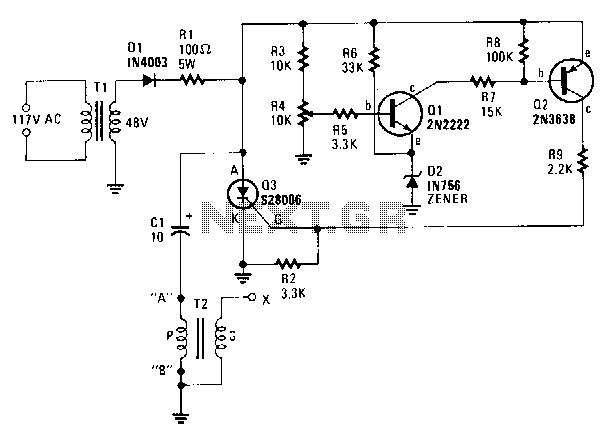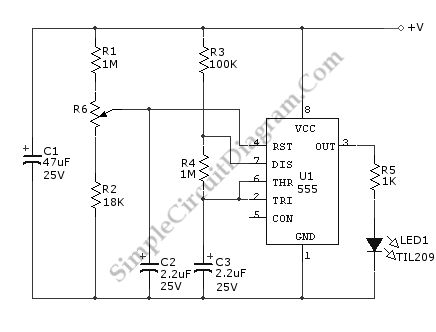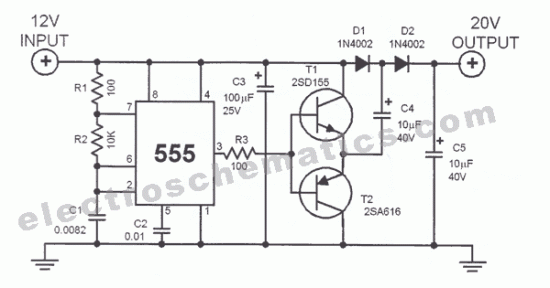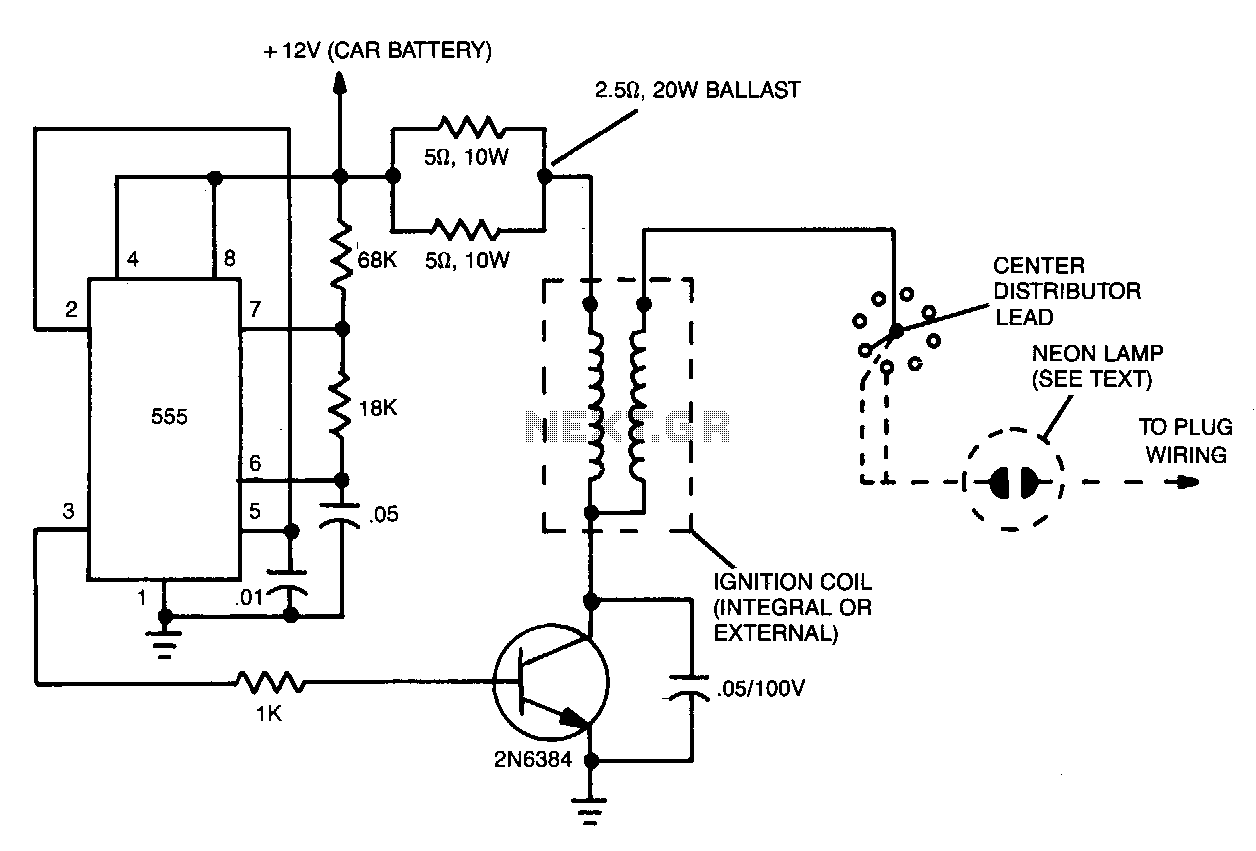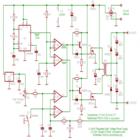
Mobile voltage regulator
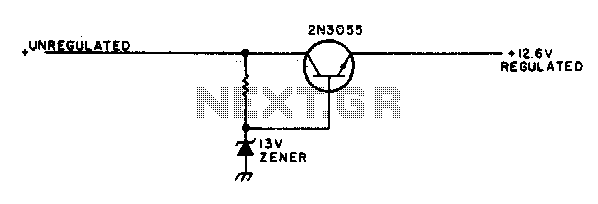
This simple mobile voltage regulator circuit may save your two-meter or CB transceiver if the voltage regulator fails. The 2N3055 should be heat-sinked if the current drawn by the rig exceeds 2 A during transmission. This circuit will do little under normal operating conditions but could save expensive equipment if the vehicle's electrical system loses regulation.
The mobile voltage regulator circuit is designed to provide a stable output voltage to two-meter or CB transceivers, protecting them from voltage fluctuations that can occur in a vehicle's electrical system. The heart of the circuit is the 2N3055 power transistor, which is capable of handling significant current loads. It is essential to attach a heat sink to the 2N3055 when the current demand from the transceiver exceeds 2 A, particularly during transmission, to prevent thermal overload and ensure reliable operation.
The circuit typically consists of an input capacitor to filter out high-frequency noise from the vehicle's electrical system, followed by the 2N3055 configured as a linear voltage regulator. A feedback mechanism is employed to maintain a constant output voltage, regardless of variations in input voltage or load conditions. This is crucial for sensitive communication equipment, which requires a stable power supply to function correctly.
Under normal operating conditions, the circuit may not actively intervene, as the vehicle's electrical system provides the necessary voltage regulation. However, in the event of a failure in the vehicle's voltage regulator, this circuit acts as a safeguard, ensuring that the transceiver continues to receive an adequate power supply. This functionality can prevent damage to expensive equipment, making the circuit a valuable addition for users relying on two-meter or CB transceivers in automotive applications.
In summary, the mobile voltage regulator circuit is a simple yet effective solution for enhancing the reliability of communication devices in vehicles, mitigating the risks associated with voltage regulation failures.This simple mobile voltage regulator circuit may save your two meter or CB transceiver if the voltage regulator fails. The 2N3055 should be heat sinked if current drawn by the rig is in excess of 2 A on transmit This circuit will do little under normal operating conditions, but could save expensive equipment if the vehicle"s electrical system loses regulation.
The mobile voltage regulator circuit is designed to provide a stable output voltage to two-meter or CB transceivers, protecting them from voltage fluctuations that can occur in a vehicle's electrical system. The heart of the circuit is the 2N3055 power transistor, which is capable of handling significant current loads. It is essential to attach a heat sink to the 2N3055 when the current demand from the transceiver exceeds 2 A, particularly during transmission, to prevent thermal overload and ensure reliable operation.
The circuit typically consists of an input capacitor to filter out high-frequency noise from the vehicle's electrical system, followed by the 2N3055 configured as a linear voltage regulator. A feedback mechanism is employed to maintain a constant output voltage, regardless of variations in input voltage or load conditions. This is crucial for sensitive communication equipment, which requires a stable power supply to function correctly.
Under normal operating conditions, the circuit may not actively intervene, as the vehicle's electrical system provides the necessary voltage regulation. However, in the event of a failure in the vehicle's voltage regulator, this circuit acts as a safeguard, ensuring that the transceiver continues to receive an adequate power supply. This functionality can prevent damage to expensive equipment, making the circuit a valuable addition for users relying on two-meter or CB transceivers in automotive applications.
In summary, the mobile voltage regulator circuit is a simple yet effective solution for enhancing the reliability of communication devices in vehicles, mitigating the risks associated with voltage regulation failures.This simple mobile voltage regulator circuit may save your two meter or CB transceiver if the voltage regulator fails. The 2N3055 should be heat sinked if current drawn by the rig is in excess of 2 A on transmit This circuit will do little under normal operating conditions, but could save expensive equipment if the vehicle"s electrical system loses regulation.
